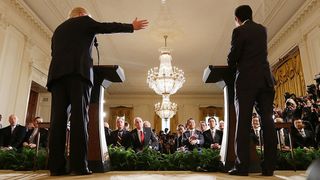Executive summary and recommendations
The Trump administration looks to be adopting a more muscular and self-interested security policy in the Asia-Pacific.
- Confrontational on China: Trump and his advisers have outlined a hard line towards China on most bilateral issues, and view Beijing as an aggressive strategic competitor that needs to be deterred with US strength
- Supportive but transactional on allies: the administration will uphold Asian security guarantees at the same time as more strictly scrutinising the US interests at stake. The United States will seek greater burden-sharing and “wins” from allies, including initiatives to create new US jobs.
- A military-first rebalance: the administration will advance the security elements of President Obama’s “pivot to Asia” while attaching little importance to engagement with Southeast Asia or the rebalance’s original liberal internationalist goals.
Changes in US Asia policy will likely produce more volatile relations with competitors, and potentially between Washington and its allies and partners.
- Instability in US-China relations: Trump’s abrasive policies, particularly on Taiwan, are likely to deepen friction with China and increase the risk of mixed signals and communication breakdowns.
- Disunity and fragility in the US alliance network: Trump’s “America first” approach to Asia is at odds with the policy preferences and public opinions of most regional allies, creating potential constraints on coordination between Washington and its Asian alliance network.
- Divergence between Australia and Japan: Japan’s anxiety about being abandoned by the United States may see it rush to embrace Trump’s Asia policy, while Australia’s concern about being entrapped in potential US military endeavours could see it keep some distance from Washington. This may produce opposing dynamics that could weaken bilateral ties and trilateral cooperation.
Australia needs to adopt a more active regional security policy to weather these destabilising shifts. It should:
- Assist the United States in articulating policy priorities on China.
- Actively work to reduce possible misperceptions between the United States and China.
- Work multilaterally with Asian allies and partners to communicate shared interests, opportunities, and redlines to President Trump’s cabinet.
- Coordinate US alliance management strategies with Japan.
- Build greater resilience into the US Asian alliance network by establishing new trilateral partnerships with Southeast Asia, starting with an Australia-Indonesia-Japan grouping.
- Assume a more active leadership role in Southeast Asia by independently contributing to a stable and liberal regional order.
Introduction
While the Asia-Pacific does not rank highly in US President Donald Trump’s worldview, his administration looks to be adopting a more muscular security policy in the region than that of his predecessor. During the 2016 election campaign, Trump’s “America first” rhetoric and hostility towards allies Japan and Korea sparked regional concerns about US retrenchment.(1) But Trump is not shaping up to be an isolationist in Asia. In fact, he may prove to be more forcefully engaged than many US allies and partners will like. Since the election, Trump has outlined hard line positions on China, Taiwan, and North Korea, raising the spectre of greater instability in the region. Although Secretary of Defense James Mattis and Secretary of State Rex Tillerson have moderated his more extreme pronouncements, the region can still expect a harder and more self-interested Asia policy from the United States.
Shifts in US Asia policy will likely produce more volatile relations in the Asia-Pacific — not just between competitors like the United States and China, but potentially between Washington and its allies and partners as well
Three main elements are likely to define Trump’s approach to Asia. First, a confrontational attitude to China on most bilateral issues. Second, a supportive but transactional stance on US allies in Asia. And third, a military first approach to the “rebalance to Asia” that attaches little importance to engaging Southeast Asia or to the liberal internationalist goals of Barack Obama’s initiative. These shifts in US Asia policy will likely produce more volatile relations in the Asia-Pacific — not just between competitors like the United States and China, but potentially between Washington and its allies and partners as well.
Such dynamics are still in flux. Trump’s administration is mercurial and its Asia policy is inchoate: gleaned from tweets, essays, statements, and early diplomatic interactions by the president and his cabinet.(2) The judgements presented here could change, perhaps substantially, as personnel and policies settle over time.
Australia needs to adopt a more active foreign and security policy in Asia to manage the destabilising shifts that Trump’s administration could produce. This will require careful input into US-China relations, collaboration with like-minded Asian allies and partners, and greater Australian leadership in Southeast Asia. The final section of this report outlines six policy recommendations that Canberra should consider as it guides Australia through these potentially troubling times.
Asian security: Australia must step in where Trump fails to tread
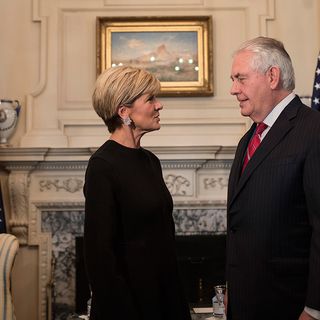
Confronting China
The Trump administration is shaping up to take a hard line towards China on almost every major issue in the bilateral relationship. Although this was expected on trade and economic relations, few predicted the president would prioritise a confrontational China policy on Taiwan, the South China Sea, and North Korea.(3) The administration’s approach is grounded in a belief held by Trump and his close advisers that the United States and China are locked in a great power competition.(4) It is reinforced by an Asia team studded with China hawks or establishment figures who are committed to checking China’s power.(5) To a certain extent, it is also linked to a bipartisan shift in Washington’s China debate which has recently hardened as officials and analysts grow increasingly pessimistic about the prospects of a “constructive strategic partnership” with China.(6) Where the administration breaks with the mainstream, however, is in its public antagonism towards Beijing and willingness to question sacrosanct principles in the US-China relationship.
Trump’s December phone call with Taiwanese leader Tsai Ing-wen to discuss “strengthening bilateral relations” was an early signal of his determination to exert pressure on China.(7) Ten days later, Trump declared “I don’t know why we have to be bound by a ‘One China’ policy unless we make a deal with China having to do with other things, including trade”.(8) This decision to raise Taiwan’s diplomatic status as a way to pressure Beijing was the result of a very careful China strategy assessment that Trump and his inner circle conducted in early December.(9) These unprecedented actions challenged a non-negotiable “core interest” for Beijing and risked dangerously inflaming US-China tensions. Since then, sustained lobbying by establishment figures, particularly Secretary Tillerson, led Trump to begrudgingly agree to “honour the ‘One China’ policy” during a phone call with Chinese President Xi Jinping.(10)

Far from being a conciliatory turn in Trump’s China policy, this exchange was the minimum required to have a functional relationship with Beijing. But it does not prevent the White House from expanding defence ties, arms sales, or official exchanges with Taiwan.(11) As key advisers on Trump’s Asia team advocate closer US-Taiwan ties on strategic and ideological grounds, it seems likely Taiwan will receive greater support.(12) It remains unclear whether he will genuinely bolster the tiny democracy or use the threat of deeper US-Taiwan relations as a bargaining chip to achieve other priorities. Either way, Trump’s position on Taiwan belies an intention to unilaterally chart an assertive China policy.
Underscoring many administration officials’ hard line on China is a sense that Beijing is an aggressive strategic competitor that has been taking advantage of US weakness and needs to be deterred with strength. This is particularly evident in the South China Sea. Trump has condemned China’s “brazen” island-building campaign as an effort “to build a massive military complex” without asking Washington “if it was OK”.(13) He views Beijing’s assertive actions as evidence it has “no respect for our… country”, and has vowed to rectify this slight by using the United States’ “tremendous economic power over China… as a bargaining chip”.(14) Peter Navarro, head of Trump’s National Trade Council, and Alexander Gray, the transition’s Asia policy coordinator, have expressed similar views, arguing that Obama’s “feckless” rebalance emboldened China’s “aggressive” maritime actions.(15) Both believe the administration should push-back against China’s muscle-flexing with a show of military strength to persuade “allies and competitors... the US president stands by what he says”.(16) These sentiments chime with chief strategist Steve Bannon’s fatalistic assessment about an “expansionist” and “arrogant” China, which he thinks makes a war in the South China Sea inevitable within a decade.(17)
No puppet: Rex Tillerson as secretary of state
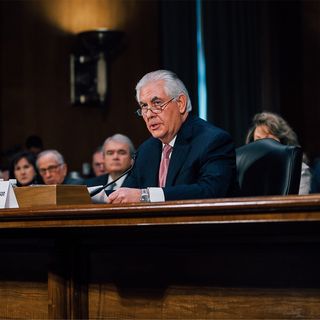
Although a more nuanced South China Sea policy appears to be taking shape under secretaries Mattis and Tillerson, both still share the administration’s broad commitment to be tougher than Obama. Tillerson has stated: “The United States must be willing to accept risk if it is to deter further destabilising [Chinese] actions and reassure allies and partners that the United States will stand with them in upholding international rules and norms.”(18) While this has yet to translate into concrete strategy, it is the most robust statement by a cabinet member to date.(19) Mattis and Tillerson have also been frank in condemning Beijing’s “confrontational behaviour” in the East and South China Seas, likening China’s attempt to carve out a sphere of influence in Asia to Russia’s actions in Crimea.(20) Mattis reportedly told Japanese officials in February 2017 that he would adopt an “active role” in defending freedom of navigation.(21) Accordingly, it is likely the administration will conduct expanded and more daring “freedom of navigation operations” within 12 miles of China’s artificial outposts, in addition to more regular presence and sensitive reconnaissance operations.
Trump’s team has also been tough on China over North Korea. In his post-election meeting with Obama, Trump was persuaded that preventing North Korea from obtaining a ballistic missile that could hit the continental United States was the most pressing security challenge in Asia.(22) Mattis has since deployed THAAD — a missile defence system — ahead of schedule in South Korea, while Trump and Tillerson have criticised China over its “empty promises” to pressure Pyongyang and its failure to fully enforce United Nations sanctions.(23) To increase US pressure, Secretary Tillerson has publicly indicated that Washington will consider “secondary sanctions” on Chinese firms that import North Korean coal.
Underscoring many administration officials’ hard line on China is a sense that Beijing is an aggressive strategic competitor that has been taking advantage of US weakness and needs to be deterred with strength.
All of this has angered Beijing, which opposes US missile defences close to its borders and is concerned about preserving its international image and the revenue of Chinese firms along the North Korean border.(24) If secondary sanctions are imposed, they will likely make China a more recalcitrant partner on the Korean Peninsula, even as experts predict sanctions cannot force Pyongyang to halt its nuclear program in any reasonable timeframe.(25) This will make diplomatic options harder to formulate.(26) As Pyongyang is reportedly within two years of being able to strike the US mainland, it is very likely the administration will put unprecedented pressure on China to squeeze its dependent neighbour — worsening a longstanding rift in US-China relations.
It is possible Trump will use his hard-line positions to strike a “grand bargain” with Beijing from a position of strength. This was mooted by his former adviser and one-time CIA chief James Woolsey who suggested the president could “[accept] China’s political and social structure… in exchange for China’s commitment not to challenge the status quo in Asia”.(27) An alternative could see the White House try to secure a favourable deal on bilateral trade and investment in return for granting Beijing more strategic space.(28) Neither deal now seems likely. Given the depth of the administration’s hostility towards China, and the turbulent opening to US-China relations under Trump, a confrontational China policy is in the making.
Supportive but transactional on allies
The administration will continue to support US allies in the Asia-Pacific, but will do so in a transactional and self-interested way. Trump is instinctively sceptical about the value of alliances. His “America first” campaign heavily criticised allies like Japan and South Korea for allegedly free-riding on Washington’s goodwill. It emphasised the unsustainable costs of stationing US troops abroad and vowed to withdraw forces if Tokyo and Seoul refused to pay more for their defence.(29) Trump even suggested Japan and South Korea might be better off acquiring nuclear weapons.(30) Such comments were unprecedented in the way they depicted US alliance commitments as negotiable deals, challenging decades of bipartisan security policy in Asia.(31)
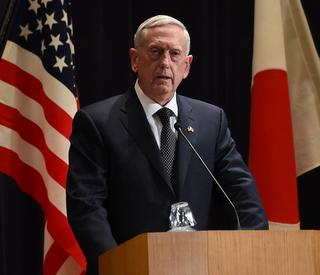
Since the election, however, Trump has become more supportive of Japan and South Korea, even as he fluctuates between deriding NATO as “obsolete” and giving it his “support”.(32) In conversations with Japanese Prime Minister Shinzo Abe and South Korean President Park Geun-hye in November, then President-elect Trump conveyed his intent to work closely with both on security and defence.(33) By February, he expressed “ironclad” support for both allies, but did not articulate specific defence commitments.(34) Then, during his first meeting with Abe after the inauguration, the president reassured the region by issuing a joint statement that called the “unshakable US-Japan alliance” the “cornerstone of peace, prosperity, and freedom in the Asia-Pacific”.(35) The text explicitly brought the disputed Senkaku/Diaoyu Islands under Article 5 of the US-Japan Security Treaty and called for enhanced defence cooperation. While Trump has yet to make a similar pronouncement about South Korea, trends are in the right direction.
Trump’s turnaround on Asian alliances is a positive indicator that the status quo members of his foreign policy team may be able to steer him towards traditional tenets of US Asia policy. Top advisers like Mattis, Tillerson, and former national security adviser Mike Flynn have prepared the groundwork for smooth relations with Tokyo and Seoul; and all have worked to convince the president that Asian security partners are indispensable force multipliers for preserving regional stability and presence, and deterring Chinese adventurism.(36)
Secretary Mattis has played the leading role. By making his first official trip to South Korea and Japan, Mattis deliberately signalled the Pentagon would place a high priority on Asian allies.(37) His conventional speeches offered much-needed verbal reassurance. Additionally, his trip seemed designed to pre-emptively bind the president to specific commitments.(38) By publicising Washington’s plan to deploy THAAD to South Korea and flagging its Article 5 commitment to the Japan-administered Senkaku/Diaoyu Islands, Mattis staked out key pegs for a strong alliance posture. This makes it hard for Trump to not follow suit.(39) As Mattis enjoys deep respect among congressional Republicans and Democrats, and commands the loyalty of bureaucrats and appointees within the Pentagon, it would be politically costly for Trump’s inner circle to depose him. Accordingly, Asian allies can probably expect a degree of consistency in the administration’s support.
Work in progress: Donald Trump’s Asia team
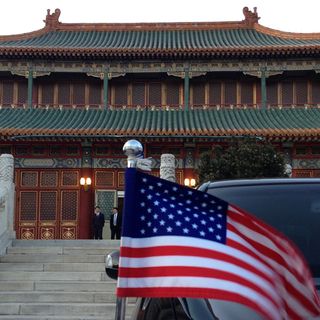
But Trump is still likely to adopt a more transactional approach towards Asian allies than Obama. He will be looking for “wins” in job creation and defence burden-sharing as a quid pro quo for cordial alliance relations, even if these are not direct trade-offs for US security guarantees.(40) This dynamic lay behind Abe’s rapid success in developing a positive rapport with Trump. Rather than simply explaining the mutual benefits of the US-Japan alliance, Tokyo calculated it also had to court Trump on economic issues.(41) After all, just days before meeting with Abe, Trump accused Japan of devaluing the yen and had recently criticised its automotive exports.(42) In a pre-emptive move to reverse this narrative and earn Trump’s good graces, Japan put together a Growth and Employment Initiative outlining a bilateral plan to “generate 700,000 jobs in the US and create new markets worth US$450 billion over the next decade”.(43) The package was ultimately not formally proposed. However, it served its purpose as a sweetener to appeal to Trump’s “America first” instincts.
The president’s infamous phone call with Australian Prime Minister Malcolm Turnbull offers another window into his transactional attitude. Trump lambasted the US-Australia refugee resettlement agreement as “the worst deal ever”, accusing Canberra of preparing to export the “next Boston bombers” and terminating the call after 25 minutes.(44) He then tweeted: “I will study this dumb deal!” — clashing with the US Embassy’s statement that Washington “would honour” the agreement”.(45) The president’s actions were a deliberate attempt to make a spectacle out of something he saw as a bad deal for the United States and revealed an insensitivity to public opinion in Australia. A subsequent outpouring of congressional support for the US-Australia alliance, and Foreign Minister Julie Bishop’s successful meetings with US cabinet officials, have calmed relations.(46) But the incident suggests Trump will not manage alliances from a foundation of friendship and will be attuned to publicly scrutinising what the United States gains and loses.
Broader domestic factors are likely to play into Trump’s transactional instincts on alliances. Weary from 16 years of war and endless global commitments, the US public is growing less interested in international engagement. According to surveys conducted in mid-2016, 57 per cent of Americans want the United States to deal with its own problems and let other nations handle theirs, while 41 per cent say Washington is doing too much to solve world problems.(47) Although support for compromising with allies remains at 51 per cent, this isolationist trend will force the White House to carefully account for the US interests at stake overseas.(48) This is not new. Under Obama, Washington took a more “first-principles approach to alliances”, asking allies and partners to shoulder more of the regional burden and scrutinising the US interests in specific partnerships and crises.(49) Given the congressional debate about reducing defence spending and foreign commitments, these trends are likely to deepen and comingle with Trump’s “America first” stance on alliances.
A military first rebalance
The Trump administration is ambivalent about an integrated “rebalance to Asia” — Obama’s signature Asia-Pacific strategy designed to refocus US military, economic, and diplomatic resources to the region.(50) Although senior foreign policy officials maintain the United States needs to “show up” in Asia to support its allies and counterbalance China, none have paid attention to the rebalance or its internationalist aims in speeches or statements.(51) In fact, Secretary Mattis expressly argued: “I hesitate to use phrases such as ‘rebalance’ or ‘pivot’ as they imply that we are turning away from our commitments elsewhere.”(52)
But the administration appreciates the need to address strategic challenges in Asia. It is thus likely to pursue a military first rebalance that emphasises forward presence, major alliances, deterrence, and readiness.(53) Trump’s proposed US$54 billion increase to the 2018 defence budget is earmarked for “shipbuilding, military aircraft, and establishing ‘a more robust presence in key international waterways and chokepoints’ including the South China Sea”.(54) While this figure is less than what the Senate Armed Services Committee chairman John McCain has requested, it would begin to restore the military after years of sequestration.(55) It could also begin to realise Trump’s election promise to build a 350 ship navy to deter Beijing, something Navarro and Gray think will rightsize Obama’s “timely” but “weak” pivot to Asia.(56)
If the Trump administration only persists with the military aspect of the rebalance, there is a risk its Asia strategy will take on a harder edge and become disaggregated from key economic and diplomatic pillars of the United States’ traditional regional role.
Despite his cautious stance on the rebalance, Mattis is focused on countering military threats to US interests in Asia. His alliance reassurance tour, emphasis on deterring Beijing “from a position of strength”, and early prioritisation of North Korea highlight these inclinations.(57) US defence officials report that they are optimistic that Mattis “gets it on China”.(58) While Mattis’ first Budget Guidance Memo stresses “warfighting readiness” and “the campaign against ISIS”, by 2019 he plans to “modernise” US forces and focus on “advanced capabilities”.(59) In other words, the Pentagon’s medium- to long-term plan is to continue to prepare for high-technology warfare against peer competitors like China. For now, continuity is the best way to characterise the military rebalance: with warships and P-3/P-8 aircraft exercising daily presence in the South China Sea, backed with regular operations by carrier task groups.
If the Trump administration only persists with the military aspect of the rebalance, there is a risk its Asia strategy will take on a harder edge and become disaggregated from key economic and diplomatic pillars of the United States’ traditional regional role. This already appears to be happening. Trump’s proposed 37 per cent cut to the State Department’s budget will slash diplomatic, soft power, and development resources in favour of redistributing funds to the military.(60) Moreover, his abandonment of the Trans-Pacific Partnership (TPP) has ensured that the United States will take a back seat on trade standard-setting and rule-making for 36.6 per cent of the global economy.(61) As the TPP’s primary goal was geoeconomic — binding like-minded economies as a hedge against China’s lower trade standards, and signalling the United States’ commitment to Asia’s wellbeing — its collapse harms US leadership in Asia.(62) Many nations saw the agreement as a litmus test of US staying power and will now be driven to recalibrate trade strategies towards Chinese initiatives.
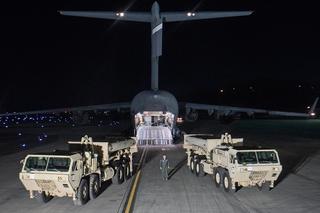
A failure to diplomatically engage Southeast Asian nations in parallel with military initiatives would make the United States’ regional presence more brittle. Obama set a high bar for US engagement in Southeast Asia: joining the East Asia Summit, hosting US-ASEAN leaders’ meetings, and making 13 trips to Southeast Asia during his presidency. Although not perfect, this active diplomacy helped reassure ASEAN nations of Washington’s support. Trump, by contrast, appears inclined to deal exclusively with big powers and has paid scant attention to Southeast Asia nations or institutions like ASEAN. Other than discussing treaty allies and terrorist challenges in Southeast Asia, Mattis and Tillerson have also been silent.(63) Without a champion in the administration, it appears likely that Trump’s military first rebalance will downplay issues that matter to Southeast Asia, such as governance support, development, infrastructure, and capacity-building. This could divorce US Asia policy from the interests of smaller, but pivotal, allies and partners.
The administration’s position on defending Asia’s liberal rules-based order is also weighted towards military rather than global issues. Although Trump has avoided the terminology of “rules-based order”, his joint statement with Shinzo Abe underscored “the importance of maintaining international order based upon the rule of law”, including in Asia’s maritime domain.(64) But compared to the 2015 US-Japan Joint Vision Statement, the 2017 version was remarkably lacking in liberal order issues, omitting: peacekeeping, non-proliferation, human rights, climate change, global health, and more.(65) The text was striking for its myopic focus on security, defence, and economics. Whereas Obama sought to rebrand and retool strategic relationships with Japan, South Korea, Australia, and India into global partnerships with a liberal order-enhancing agenda, Trump will not continue this trend.(66) Nor is it likely that his advisers will think differently. Tillerson and Bannon have been criticised by liberal internationalists for their apparent indifference to human rights, climate change, and liberal democratic concerns.(67) Although Mattis and Tillerson have voiced strong support for Asia’s rules-based order — including the UN Convention on Law of the Sea and the nuclear non-proliferation regime — these rules are manifestly about US strategic interests.(68) To the extent this administration prioritises Asia’s rules-based order, it will focus on the strategic elements of this order, not on strengthening the cosmopolitan aspects of the liberal system.
Risks for the Asia-Pacific region
The Asia-Pacific is likely to become a more competitive region in which competing national preferences make international relations more volatile — not just between competitors, but potentially between Washington and its allies and partners. Three risks appear likely.
Instability in US-China relations
President Trump’s confrontational attitude is likely to create friction in US-China relations, making Beijing a more truculent partner.(69) China will have less incentive to cooperate with the United States, let alone make difficult compromises, if there is no give and take.(70) This will make it harder to work towards common interests, such as: managing cyber challenges, coordinating North Korea policy, and expanding crisis management mechanisms. A lack of progress on these fronts would have negative effects for the entire region.
There is a risk Trump’s confrontational China policy and “America first” stance on allies and the rebalance will disrupt the cohesion of the alliance network.
Beijing’s reactions to Trump’s hard-line policies could exacerbate instability. Chinese officials and analysts are concerned that Trump might act on his “provocative” and “unpredictable” statements, particularly on Taiwan.(71) Accordingly, Beijing may seek to signal its redlines by: responding to US-Taiwan rapprochement by cancelling dialogues or conducting shows of military force; or increasing navy, air force, and militia presence in the South and East China Seas. Although Xi hopes to maintain external stability in the lead-up to China’s 19th Party Congress this year, he also has strong incentives to demonstrate resolve in the face of US provocations — setting the scene for tense US-China encounters.
Trump’s erratic leadership style increases the potential for mixed signals and breakdowns in US-China communication. His tweets of support for Taiwan could cause its independence-leaning government to misread levels of US support, emboldening Taipei to take imprudent political steps.(72) On the other hand, Beijing might underestimate Trump’s resolve to defend Taiwan or other US partners, especially in Southeast Asia, producing brazen Chinese actions in the Taiwan Strait or South China Sea.(73) Any ensuing crises would be complicated by the serious trust and communication problems emerging between Trump and Xi.(74)
Disunity and fragility in the US alliance network
Donald Trump may have been persuaded about the value of strong Northeast Asian allies, but it is unlikely he appreciates the centrality of the broader alliance and partner network in Asia. The “network” is a web of formal alliances, security partnerships, and “minilateral” frameworks linking allies and partners to each other and to Washington.(75) It is intended to deter a potential competitor from challenging the regional order by counterbalancing its power and enmeshing it rules and norms.(76) Like any deterrent, the network must be credible to work — meaning its members need to be robust, cohesive, and willing to act. For this to happen, interests and threat perceptions must be aligned and differences understood.
There is a risk Trump’s confrontational China policy and “America first” stance on allies and the rebalance will disrupt the cohesion of the alliance network. As the president’s muscular approach is out of step with many allies and partners, it may produce or intensify conflicting interests between Washington and other network countries. Most oppose provocative moves to deepen US-Taiwan relations or place punitive tariffs on Chinese imports, and will baulk at supporting the United States with these initiatives — particularly where they are vulnerable to Chinese economic coercion.(77) In Southeast Asia, US allies and partners are worried about the consequences of Trump’s military rebalance, and anxious that US-ASEAN engagement, governance reform, development issues, and institution-building will be neglected.(78) If left unmanaged, these fissures will create coordination problems between Washington and the network, and leave vulnerable members susceptible to China’s economic statecraft and other splitting tactics.
Global Mattis: The new Secretary of Defense
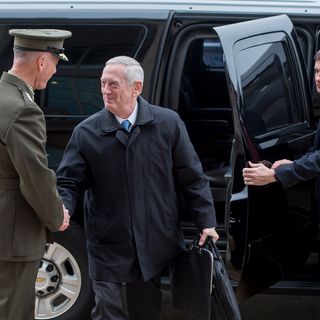
Domestically, Trump’s unpopularity is splintering public support for the United States in some alliance network countries more than others.(79) Australia is undergoing a boisterous debate about the terms of its commitment to the alliance under Trump — with growing calls to adopt a case-by-case approach to US requests and chart a more independent and values-based foreign policy.(80) A 2016 poll found 45 per cent of Australians believe Canberra should distance itself from the United States under Trump.(81) By contrast, 70.2 per cent of Japanese polled in February 2017 approved of the Trump-Abe joint statement and ongoing US support.(82) Given the military first tone of the document which omitted liberal internationalist priorities, it is unlikely a similar statement would receive widespread support in Australia. Trump is also unpopular in South Korea, Singapore, and India in ways that could differentially constrain relations with Washington.(83) In Southeast Asia, the president’s confrontational approach to China and apparent disinterest in the region has analysts worried, with some pinning hopes on Japanese security engagement and others advocating partial reorientation to China.(84)
Divergence between Australia and Japan
All of this suggests that threat perceptions among US allies and partners may diverge under the Trump administration and strain relations between friends. This may be a particular risk for Australia and Japan. Tokyo, owing to its history and geostrategic position beside China, is predisposed to worry more about being abandoned by the United States than entangled in a conflict — which explains why most Japanese back the alliance despite Trump’s divisive comments.(85) Prime Minister Abe has therefore vigorously lobbied Trump to remain committed to Japan: investing in personal and “golf diplomacy”, visiting him twice, and assembling a US$450 billion investment package as a goodwill gesture.(86) The Abe administration also views Trump’s transactional attitude on alliances as an opportunity to advance its constitutional and budgetary agenda to strengthen Japan’s self-defence forces. As Tokyo is keen to stay in sync with Washington, officials are more willing to consider a Japanese role in US-Taiwan defence ties or other China-balancing initiatives.(87)
Australia, by contrast, is mainly worried about becoming entrapped in potential US military endeavours, particularly as many expect Trump will ask more of Australia or prove to be reckless in the region.(88) Unlike Japan, Australia is not able or willing to offer large-scale economic packages or new defence investments as part of an alliance transaction. Nor is there any political appetite to support deeper US-Taiwan relations or participate in a more assertive military posture towards China. On the contrary, Bishop has restated Canberra’s commitment to the “One China” policy in the interests of “peace” and “stability”, and ruled out freedom-of-navigation patrols in the South China Sea.(89)
Japan’s desire to be the United States’ Asian ally par excellence vs. Australia’s instinct to keep some distance from Trump may impinge on Australia-Japan ties. This situation could be exacerbated by Trump’s transactional alliance politics. Tokyo may feel compelled to edge closer to Trump’s muscular Asia policy — increasing the potential for divergence between Canberra and Tokyo despite their wider shared interests.
Recommendations for Australia
1. Assist the United States in articulating policy priorities on China
While Australia has little sway over Washington’s China policy, the risk of instability in US-China relations makes it imperative to try to moderate Trump’s positions. Australia should offer an informed external perspective to help the administration recalibrate its approach in ways that are aligned with its allies and partners. This should involve prioritising high-value issues on which to exert pressure on China, as well as issues where cooperation is required. Reciprocity in trade and market access would be a productive starting point for coordinated pressure. Deterring new island-building and militarisation in maritime Asia, and working multilaterally on North Korea should be top priorities on security.(90)
2. Actively work to reduce possible misperceptions between the United States and China
Australia can help the United States and China to clarify mixed messages about Trump’s Asia policy. Australian officials have better access to Trump’s senior foreign policy advisers than their Chinese counterparts, and enjoy friendlier relations in Beijing than US officials.(91) As Canberra shares some of Beijing’s concerns about Trump’s regional policies, officials on both sides will have elevated reasons to speak candidly and trust each other.(92)
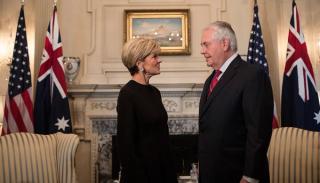
Australia should use its unique position to ensure Beijing and Washington are accurately interpreting each other’s intentions. If Australian officials know that a Trump administration sound bite is untrue — such as Tillerson’s misspeak that China’s “access to [South China Sea] islands [is]… not going to be allowed” — they should relay this to China to avoid confusion.(93) Where Beijing is distrustful of specific commitments by Trump — like his turnaround on the “One China” policy — Australia could use its knowledge of US policy to reinforce Washington’s messages and reduce misunderstandings.
3. Work multilaterally with Asian allies and partners to communicate shared interests, opportunities, and redlines to President Trump’s cabinet
Australia should convey its interests and redlines in Asia to Trump cabinet officials alongside other like-minded partners such as Japan, South Korea, Indonesia, Singapore and Malaysia. Despite some differences in threat perceptions, these nations have many common interests: a stable US-China relationship, sustained US engagement in Asian regional organisations, capacity-building in Southeast Asia, and high-standard trade architecture and infrastructure assistance. They also share redlines that would void support for Washington, including: US military provocation in the Taiwan Strait and a US-China grand bargain that sacrifices the interests of smaller Asian nations.(94) If the alliance network is to remain cohesive and useful, it is crucial that the Trump administration empathises with and supports allies and partners on these issues.
Presenting interests and redlines multilaterally will maximise the likelihood of being listened to in Washington and minimise the risk of being exploited by Trump’s transactional politics. Focusing on cabinet officials like Secretary Mattis — whose departmental priorities are more predictable and attuned to allied interests — will result in a more sympathetic hearing. Tokyo and Canberra’s experiences suggest that the safest way to negotiate with this administration is multilaterally with cabinet, rather than bilaterally with the White House. As a trusted US ally with close regional ties and deep congressional support, Australia is well placed to play a coordinating role.(95) Canberra should embark on this at this year’s APEC meeting in Vietnam and EAS in the Philippines, and could use its bilateral dialogues with like-minded partners as starting points for these conversations.
4. Coordinate US alliance management strategies with Japan
Given the potential for strains in Australia-Japan relations, both need to coordinate. Above all, Japan must resist the trap of competing for the administration’s favour by offering too much in return for a status quo alliance policy. With a president that sees every interaction as a “one-shot ‘deal’”, this is likely to be a costly approach.(96)
Tokyo and Canberra will benefit from finding common ground ahead of negotiations with the administration, particularly when lobbying, as they should, for the re-inclusion of liberal internationalist priorities in bilateral and trilateral statements.
Australia should work with Japan to broaden its support in Congress in order to offset risks of a Trump-Abe fallout over trade in the future. Tokyo and Canberra will benefit from finding common ground ahead of negotiations with the administration, particularly when lobbying, as they should, for the re-inclusion of liberal internationalist priorities in bilateral and trilateral statements. Shared redlines should also be drawn up — for instance, on types of South China Sea operations that neither are prepared to do — as it will be easier to resist excessive US demands together. To avoid expectation gaps during a crisis, Australia and Japan should have a frank discussion about their respective interests in US-Taiwan relations, regardless of whether a consensus can be reached. Both should also coordinate efforts to moderate the administration’s position on China and Taiwan.
Canberra should propose these discussions ahead of the Australia-Japan 2+2 Ministerial Dialogue this year. Planning for this meeting will focus both countries’ bureaucracies on these challenges and should produce a statement about Tokyo and Canberra’s commitment to managing alliance rifts. Greater communication and planning between prime ministers and their offices will add strategic direction to this task.
5. Build greater resilience into the US Asian alliance network by establishing new trilateral partnerships with Southeast Asia, starting with an Australia-Indonesia-Japan grouping
In an era of uncertain US resolve, rising Chinese power, and potentially divergent interests across the alliance network, building more resilience into Asia’s web of security partnerships is crucial.(97) This means reducing vertical dependence on Washington as the primary node in the network, and developing alternative patterns for horizontal self-strengthening between allies and partners themselves.
Australia and other capable regional powers should endeavour to offset the risks of Trump’s military first rebalance by establishing new trilateral partnerships with Southeast Asian nations. By focusing the resources of two like-minded powers, like Australia, Japan, Singapore, and South Korea, on more vulnerable Southeast Asian nations, like Malaysia, Indonesia, Vietnam, and the Philippines, regional players can advance collective goals in coordinated but flexible ways. These initiatives cannot make up for US neglect. But if backed with sufficient economic and diplomatic resources, they could help Southeast Asian nations to progress with original rebalance priorities, such as: governance assistance, institution building, and support for maritime surveillance, domain awareness, and capacity-building. Committed engagement by Australia and Japan would, in turn, help to reduce the risk that Southeast Asian countries will realign with China to offset potentially eroding US support. As new trilaterals would overlap with existing frameworks — like the Australia-US-Japan and Australia-Japan-India arrangements — they could function as shock absorbers in the event that divergent threat perceptions and interests strain ties between certain countries.
President Trump’s military first approach and potential recklessness in the region should not be something Australia passively accepts.
Canberra should start this process by building a comprehensive trilateral partnership with Jakarta and Tokyo. Given the strong bilateral relations that exist between the three partners, this grouping would strengthen their collective abilities to pursue shared interests and hedge against US neglect. It should focus on areas that will boost Indonesia’s national resilience, such as infrastructure development, maritime surveillance and capacity building measures, counterterrorism training, and governance reform.(98) Through leveraging existing avenues of cooperation — like Australia’s engagement of Indonesian civil society, large Australian and Japanese investments in development assistance, and the Indonesia-Japan Maritime Forum established in 2016 — this new grouping would provide greater ballast for Canberra, Tokyo, and Jakarta to weather Trump’s Asia policy.
6. Assume a more active leadership role in Southeast Asia by independently contributing to a stable and liberal regional order
As a “significant power” with the diplomatic, economic, and military capacity to positively influence the region, Australia should pursue a more assertive leadership role in Southeast Asia.(99) President Trump’s military first approach and potential recklessness in the region should not be something Australia passively accepts. It creates a need for Canberra to use its own initiative to shape the region in ways conducive to strengthening stability and liberal values. This will require Australia to independently step-up its efforts to establish: an integrated regional trade architecture, shared public security goods, an expanded agenda for governance and development, and new opportunities for robust engagement with Southeast Asian nations.
Demonstrating leadership on these goals and working with like-minded countries to achieve them would help Canberra to hedge against Trump’s neglect of Southeast Asia and China’s efforts to solidify its influence in the region. To this end, Australia should invest more heavily in implementing the ASEAN-Australia Comprehensive Partnership and fostering the proposed ASEAN-Australia Leaders’ Summit as an annual event.(100) Australia should also spearhead a post-TPP agenda for high trade standards and explore new ways to contribute to regional security goods — such as providing collective maritime surveillance assistance to vulnerable Southeast Asian countries when Canberra’s Triton drones are operational.(101) Such steps, while costly, would bolster regional stability and resilience, complimenting Australia’s enduring alliance relations with the United States.





